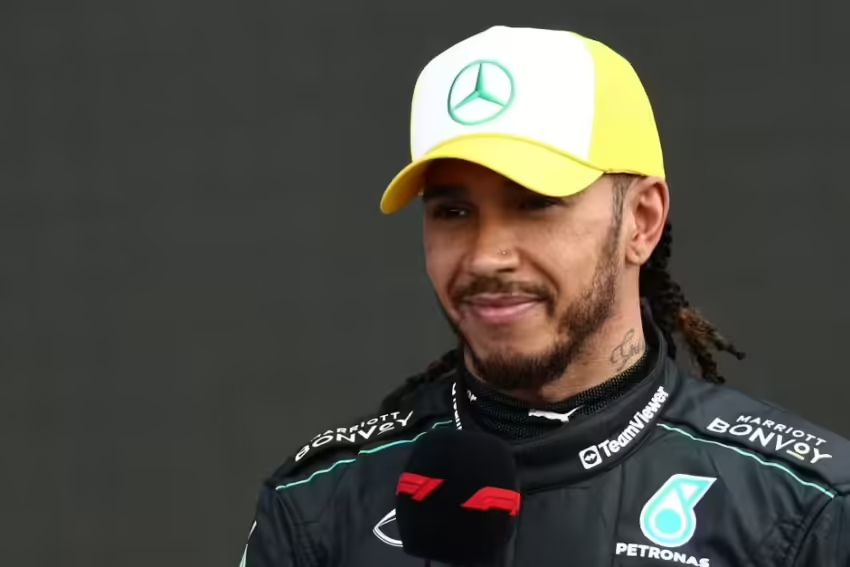Lewis Hamilton has an advocate for change in F1, which includes prompting the FIA to make tweaks to their regulations during his 17-year career.

Lewis Hamilton has influenced the FIA to change their rules (Image: Getty)
Formula One fans do not need any reminders about the seismic impact Lewis Hamilton has had on the sport during his remarkable 17-year career to date. With seven world titles, 105 race victories and 104 pole positions, he remains one of the greatest drivers to grace motorsport.
But over time, the 39-year-old has also had his influence on how F1 is governed by the FIA, the world motorsport governing body that judges, rules and oversees all regulations within the sport.
Given that he has over 350 race starts, it is no surprise Hamilton has been involved in various incidents that shaped the future of motor racing. Express Sport looks at seven critical moments where the Briton changed how F1 is now governed.
1. External assistance
During the 2007 European GP, Lewis Hamilton crashed out at the Nurburgring and required assistance to be lifted back onto the track using a tractor. But after this incident took place, the FIA changed the rules regarding external influence.
Drivers are now prohibited from receiving outside help – which extends to vehicles as well as people – to get back onto the track after a crash. They made it clear any external assistance provided during a race would result in penalties being handed out, stating that drivers must recover their car on their own or with help from their team in the pit lane.
2. Gaining an advantage by going off the track
In Belgium in 2008, Hamilton was forced to cut the chicane while battling his title rival Kimi Raikkonen, and allowed the Finn to reclaim the position. He let Raikkonen back past, but immediately overtook him again at the next corner.
The FIA clarified that if a driver gains an advantage by leaving the track, they must ensure they give back the position and concede any lasting time advantage gained from their off-track adventure. Immediate re-overtaking or benefiting from a better position due to going off-track is not allowed.

The safety car was required at the 2009 Australian GP (Image: Getty)
3. Honesty with officials
At the 2009 Australian GP, Hamilton and his former team McLaren were deemed to have allegedly provided misleading information to the stewards regarding an incident under the safety car.
Initially, Hamilton told the stewards he did not deliberately let Jarno Trulli pass, which led to Trulli receiving a penalty. However, it later became apparent from his radio transmissions that Hamilton had been instructed to let Trulli pass.
The world motorsport governing body ruled that drivers must be absolutely honest in all communications with the stewards. If they were found to deliberately mislead stewards with false information, they could be hit with a more severe penalty or even disqualification.
4. Excessive weaving
More now than ever, drivers attempt to break the aerodynamic ‘tow’ that drivers behind get to increase their speed by weaving on a straight. Hamilton was guilty of this at Malaysia in 2010, where he tried to reduce Vitaliy Petrov’s ability to get in his slipstream.
The FIA expanded the rules on this topic, stating that drivers are allowed only one move to defend their position and made it illegal for another car to be impeded by excessive weaving.

Lewis Hamilton crossed over the grass after aborting his pit entry (Image: Getty)
5. Pit entry and exit regulations
In a controversial incident at the German GP in 2018 at Hockenheim, Hamilton aborted a pit stop when he cut across the grass at the entry point to rejoin the track. In doing so, he crossed the pit entry line, which was a contravention of the rules.
The FIA reinforced existing rules prohibiting crossing the pit entry and exit lines, highlighting the potential safety concerns due to high speeds on the straight. Drivers were subsequently informed by the FIA they must commit to the pit entry once they cross the white line and cannot rejoin the track.
6. Attire and political messages
More and more, social justice issues have crept into the sport and Hamilton has been an advocate of freedom of expression. The seven-time world champion wore a T-shirt on the podium at the 2020 Tuscan GP that read: “Arrest the cops who killed Breonna Taylor”, following a shooting in the USA.
The FIA updated podium and pre-race regulations to limit what clothing drivers can wear and warning them not to make political or personal statements. Instead, drivers must wear their race suits fully zipped up during podium ceremonies and official interviews, although some appear to unzip the top half to allow their bodies to receive air.

Lewis Hamilton showed off his jewellery to make a statement in response to the FIA ban (Image: Getty)
7. Jewellery ban
On several occasions, Hamilton has clashed with FIA president Mohammed Ben Sulayem over his fashion choices, including necklaces, piercings and other jewellery.
It came to a head at the Miami GP in 2022 when he showed off his bling, despite existing regulations prohibiting jewelry for safety reasons.
The FIA decided to strictly enforce the existing ban on wearing jewellery during competition, requiring drivers to remove all pieces before sessions. Hamilton, however, was given a medical exemption and was allowed to race after explaining that some of his were difficult to remove.
